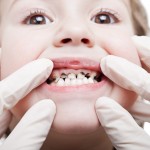
Sadly child mistreatment, including abuse and neglect are a reality in society. In the UK, dental neglect has been defined as, ‘‘the persistent failure to meet a child’s basic oral health needs, likely to result in the serious impairment of a child’s oral or general health and development’’. The aim of this review was to identify the features of oral neglect in children.
A detailed search of a wide range of databases were searched including; Medline, Embase, CINHAL, ASSIA (Applied Social Sciences Index and Abstracts), ERIC (Education Resources Information Center), Cochrane Central Register of Controlled Trials, SCOPUS, Social Services Abstracts, Sociological abstracts, Web of Knowledge, Google Scholar and OpenGrey. This was supplemented by a number of journals and dental websites. Abstracts and selected full-text articles were scanned by the principal investigator and eligible studies identified for review. Primary studies of children aged 0 to < 18 years that included confirmed cases of oral neglect and provided adequate data relating to the examination of the child and dental/oral features as well as the intra/extra oral features identified using a referenced recognised index or using unreferenced but explicitly stated criteria or described in detail were included. Each relevant article was independently reviewed by two reviewers
- 9 studies (3 Case studies, 2 Case control, 2 Retrospective Cohort, 1 Case series,1 Cross-sectional ) that included a total of 1595 children met the inclusion criteria
- The key features of dental neglect noted were
- Failure or delay in seeking dental treatment;
- Failure to comply with/complete treatment;
- Failure to provide basic oral care;
- Co-existent adverse impact on the child e.g. pain and swelling.
- Two studies developed and implemented ‘dental neglect’ screening tools with success.
- The importance of Quality of Life tools to identify impact of neglected dental care also highlighted.
- It was not possible to define a ‘threshold’ level of dental caries that distinguished dental neglect.
The authors concluded
While it is indisputable that members of the dental team are well positioned to observe the signs of general and/or dental neglect, lack of clinical confidence in identifying and referring neglect prevails. This review reiterates certain features of dental neglect as being clearly identifiable: namely a failure or delay in seeking treatment for significant dental caries or trauma, failure to complete a recommended course of treatment, or allowing the child’s oral health to deteriorate avoidably. Such cases should be reported promptly to the appropriate agencies. There is a clear deficiency of case–control studies to precisely define the distinguishing characteristics of this group of children. Given the known consequences of dental neglect, it is to be hoped that dental practitioners will be more pro-active in working with their local safeguarding team to ensure the safe and appropriate care of these children.
Comment
As the authors point out dental practitioners will encounter cases of child neglect and have an ethical responsibility to find out about and follow their local child protection procedures. Some useful links for the UK are provided below.
Links
Bhatia SK, Maguire SA, Chadwick BL, Hunter ML, Harris JC, Tempest V, Mann MK, Kemp AM. Characteristics of child dental neglect: A systematic review. J Dent. 2013 Oct 17. doi:pii: S0300-5712(13)00274-1. 10.1016/j.jdent.2013.10.010. [Epub ahead of print] PubMed PMID: 24140926.
Child Protection and the Dental Team
Child Protection and the Dental Team – Scottish Dental
